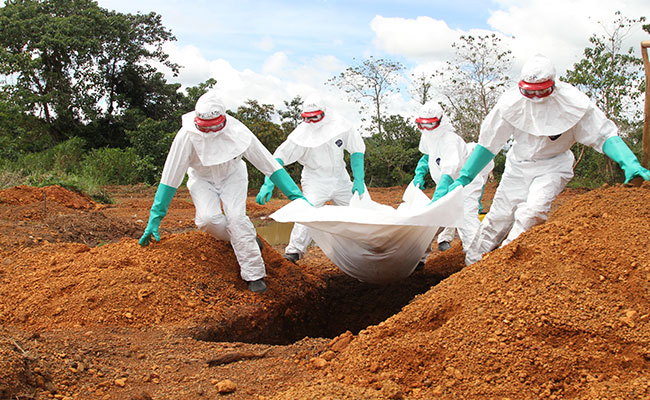64 Transmission
There are multiple modes of transmission that allow zoonotic diseases to jump between animal and human populations. Zoonotic diseases and diseases with the potential to become zoonoses are often already present in animal hosts, living individuals that provide an environment to support an infectious agent under natural conditions. These individuals make up the reservoir population. When a pathogen reaches a high prevalence in a reservoir population, it can enter a different host population through a spillover event. These can be driven by mutations, allowing pathogens to infect and live in a new host, or by exposure to high concentrations of pathogen in a different species (Keusch et. al., 2009). Typically, these events occur through direct contact, indirect contact, or a vector species that transmits infected material between individuals. (NC)

Direct contact involves directly touching saliva, blood, urine, feces, or other bodily fluids from an infected animal or human carrier (CDC, 2024). Ebola is transmitted from human to human through direct contact with fluids, including blood, feces, or urine. For example, interacting with an infected individual’s soiled bedding provides a high risk of contracting the disease. Virus can even persist after a person has died, posing risk of direct transmission to an unsuspecting individual. In Sierra Leone, contact with infected individuals during burial poses a huge risk of Ebola infection. Common cultural practices require that families and community members touch and wash a body in preparation for funerals, even if the individual had died because of an Ebola infection. However, efforts to train individuals in Ebola-infected areas about safe burial practices have caused a reduction in direct transmission after death. By wearing proper PPE when handling the body, burying the body 2 meters below ground in a designated cemetery, and using proper disinfectant equipment, people can protect themselves from infection. However, some communities have been resistant to these practices, as they prevent the completion of traditional burial rituals. Education and outreach efforts can help health officials communicate the importance of these practices for the safety of the community, and have begun to improve acceptance of safer burial practices in areas affected by Ebola (Nielsen et. al., 2015). (NC)
Zoonoses can also spread through vectors – organisms who can transmit a pathogen from one host to another (Keusch et. al., 2009). These vectors can include mosquitoes, like the ones who carry malaria throughout the world’s tropical regions, or ticks, carriers of Lyme disease in forests in the Northeastern United States. (NC)
Finally, zoonoses can be spread indirectly through food or the air. Contaminated foods, like unpasteurized milk, undercooked meat or eggs, or even unwashed fruits and vegetables can become a source of infection (CDC, 2024). (NC)
